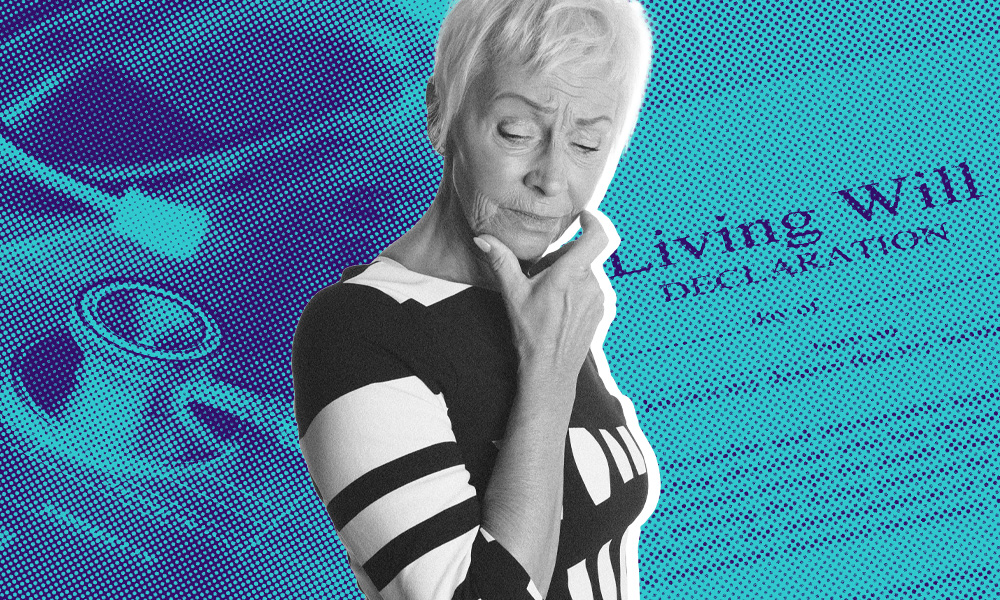A health care attorney who had helped draft hundreds of advance directives found herself questioning everything she knew when her mother suffered a severe stroke. The carefully crafted advance directive (also commonly known as a living will), which she had helped prepare, provided little guidance for the complex medical decisions that followed. "The document addressed traditional scenarios like ventilators and feeding tubes," she recalls, "but it couldn't anticipate the revolutionary new stroke treatments or experimental therapies that became available. We found ourselves in a gray area the document never contemplated,” she said.
Her experience highlights a growing challenge in advance care planning: the widening gap between when living wills are created and when they're needed. As medical technology rapidly advances and treatment options multiply, many families discover that these crucial documents, often drafted years before a crisis, fail to address the nuanced medical scenarios they face.
Why do living wills or advance directives sometimes fail during medical crises?
Critical care physicians routinely witness the shortcomings of living wills in their ICUs. "Most people create these documents when they're healthy, often decades before they're needed," one veteran intensivist explains. "They make decisions based on abstract scenarios, without the context of specific medical conditions or understanding of current treatment options."
The problem extends beyond individual comprehension. Some experts estimate that 70% of living wills fail to provide clear guidance in actual end-of-life situations. Some key reasons are medical scenarios that don't match the document's provisions; outdated terminology; and treatment options that didn't exist when the documents were created.

Why do state-mandated living will forms fall short?
The standardization of advance directives through state-mandated forms presents a significant challenge in modern health care and estate planning. While these forms aim to provide consistency and ensure legal validity, their rigid structure often fails to capture the complexity of medical decision-making and personal preferences.
State-mandated forms typically offer limited check-box options for common scenarios – ventilators, feeding tubes and CPR – but provide minimal space for additional instructions or nuanced preferences. This one-size-fits-all approach creates particular problems when dealing with complex medical conditions or specific cultural and religious requirements.
Consider a common scenario in intensive care units: A patient may be willing to accept aggressive treatment and life support, but only if there's a reasonable chance of returning to independent living. Most state forms don't provide space to articulate such conditional acceptance of treatment. Instead, they force an all-or-nothing choice about life-sustaining procedures.
Health care providers often find themselves restricted by these standardized documents. While the forms may be legally sufficient, they frequently fail to provide meaningful guidance in real medical crises. This has led to a troubling trend where the focus shifts to legal compliance rather than effective medical decision-making.


The limitations of state forms have fostered several workarounds in practice:
- Attaching detailed supplemental instructions (though questions sometimes arise about the legal weight of these additions).
- Creating separate, more detailed advance care planning documents alongside the state forms.
- Utilizing additional medical orders like POLST forms (Physician Orders for Life-Sustaining Treatment) to provide more specific guidance.
Some states have begun recognizing these shortcomings and are revising their mandated forms to allow more flexibility and personalization. However, progress remains slow, and many states use outdated forms that don't reflect current medical capabilities or the need for more nuanced decision-making.
How have medical advances changed living will effectiveness?

The pace of medical innovation has fundamentally altered the landscape of critical care. Treatments once considered extraordinary become routine, while new technologies create possibilities that existing living wills may never anticipate.
Consider these developments with artificial intelligence in medicine such as diagnostic tools, personalized treatment protocols and predictive recovery models. Then, there’s regenerative medicine and stem cell therapies, tissue engineering and organ regeneration. Targeted therapies include precision medicine, immunotherapy and gene-based treatments.
What medical scenarios do living wills often miss?
Modern medical crises rarely mirror the straightforward scenarios envisioned in most living wills. A recent case at a major medical center illustrates this challenge: A patient's living will specified no "extraordinary measures," but failed to address whether a temporary heart pump – a bridge to potential recovery – would qualify. The document, written a decade earlier, couldn't have anticipated such technology.
Today's medical landscape presents countless similar scenarios. Advanced stroke interventions, targeted cancer therapies and innovative trauma treatments create situations where full recovery might be possible, despite initially dire circumstances. These gray areas frequently leave families and health care providers struggling to interpret outdated directives.
How can you make your living will more effective?
Medical ethicists recommend focusing on values and quality-of-life goals rather than specific treatments. Instead of listing medical procedures to accept or reject, modern living wills should articulate clear principles about what constitutes acceptable quality of life for the individual.
One effective approach involves creating scenario-based frameworks. Rather than making absolute statements about treatments, documents can outline decision-making criteria based on potential outcomes and recovery chances. For example, some newer living wills include provisions for accepting aggressive temporary interventions if there's a reasonable chance of returning to independent living.
When should you update your living will?

Health care providers recommend reviewing advance directives every three to five years, or more frequently if medical conditions change. Regular reviews become particularly crucial when:
- New treatment options become available for existing conditions.
- Medical diagnoses change or new conditions develop.
- Family circumstances shift.
- Health care laws or regulations change.
How do doctors view living wills?
Emergency and critical care physicians often express frustration with traditional living wills. One emergency department director notes that these documents frequently create more questions than answers in crisis situations. "We need to know not just what treatments to avoid, but what goals we're trying to achieve," she explains.
Medical professionals increasingly advocate for a more dynamic approach to advance care planning. This includes:
- Regular discussions with health care providers about advancing medical options.
- Periodic reviews with family members about values and preferences.
- Documentation that evolves with changing medical conditions.
- Clear guidelines for temporary intervention versus long-term care.
Conclusion
The gap between creating a living will and needing it represents a significant challenge in modern health care planning. Effective living wills serve as flexible frameworks rather than rigid rulebooks. They focus on communicating values, quality-of-life goals and decision-making principles that can guide health care providers and family members through complex medical scenarios. This approach acknowledges both the unpredictable nature of medical crises and the rapid advancement of treatment options.
While state-mandated forms may continue to provide basic legal frameworks, the future of advance-care planning lies in creating more comprehensive and adaptable documents that can evolve with medical progress. The goal isn't to predict every possible scenario but to provide clear guidance about what matters most to the patient when difficult decisions must be made. Regular reviews, ongoing discussions with health care providers and openness to updating these crucial documents can help ensure that medical wishes remain relevant and meaningful when they matter most.



